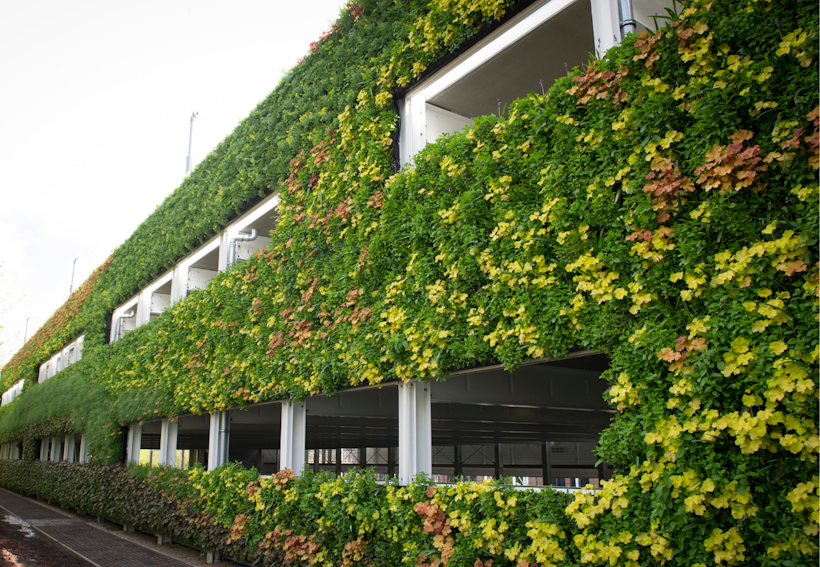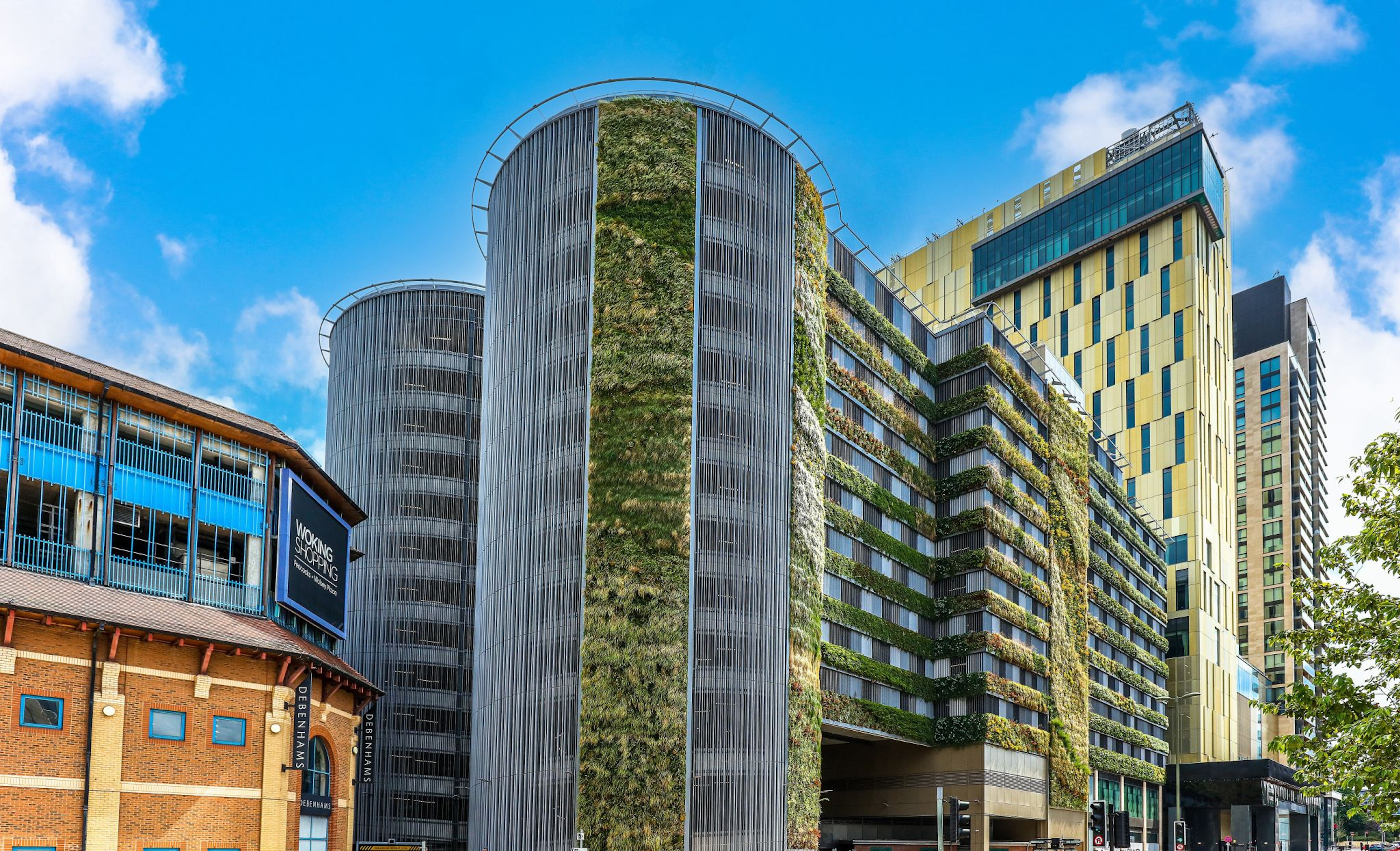In the bustling urban landscapes of today, noise pollution has become an increasingly pressing concern. As cities grow denser and louder, innovative solutions are needed to create more liveable spaces.
Living walls are a prime example of ecological architecture that not only beautifies our surroundings but also serves as an effective sound barrier.
.jpg?w=820&q=90&auto=format&fit=crop&crop=edges,focalpoint&fm=png)
The science behind living walls as sound barriers
Living walls have proven to be remarkably effective in reducing noise pollution in urban settings. Their ability to absorb and deflect sound makes them an attractive solution for creating quieter urban spaces.
Sound absorption capabilities
The foliage, soil, and air pockets within living walls absorb sound waves, reducing noise levels. Dense plantings with varied leaf sizes and textures are particularly effective at trapping and dissipating sound energy.
- Living walls can reduce ambient noise on average by 9–11dB according to Noise mitigation and acoustic absorption of Living Green Walls.
- A study by Spain's Department of Thermal Engineering found that green walls provide a weighted sound reduction index of 15 dB.
- The same study measured a sound absorption coefficient of 0.40 for green walls
Sound deflection
The uneven surface of a living wall helps to scatter sound waves, further diminishing noise pollution. This is especially useful in urban canyons where sound tends to bounce between buildings.
Comparison to traditional materials
- Living walls often outperform many common building materials in terms of sound absorption, especially at lower frequencies
- Their effectiveness is due to the combination of plants, soil, trapped air, and moisture, all of which contribute to acoustic insulation

Ecological architecture benefits beyond noise reduction
While their sound-dampening properties are impressive, living walls offer a multitude of additional benefits that make them an attractive option for urban planners and architects:
- Air Quality Improvement: Living walls act as natural air filters, trapping dust and pollutants while producing oxygen. This can significantly enhance air quality in urban areas, contributing to healthier living environments.
- Thermal Regulation: By providing an extra layer of insulation, living walls help regulate building temperatures. This can lead to reduced energy consumption for heating and cooling, aligning with sustainable design principles.
- Biodiversity Enhancement: In concrete jungles, living walls create valuable habitats for urban wildlife, including birds and insects. This fosters biodiversity and helps restore ecological balance in cities.
- Aesthetic Appeal: The visual impact of living walls cannot be overstated. They transform stark urban facades into lush, vibrant canvases, enhancing the overall aesthetic of cityscapes.

Implementing living walls in urban design
Integrating living walls into urban environments requires careful planning and expertise. Here are some key considerations:
- Plant Selection: Choose plants that are not only suitable for vertical growth but also adapted to local climate conditions. A mix of species can enhance both aesthetic appeal and sound absorption properties.
- Irrigation and Maintenance: Proper irrigation systems and regular maintenance are crucial for the longevity and effectiveness of living walls. Automated systems can help ensure consistent care.
- Structural Support: The supporting structure must be designed to bear the weight of plants, soil, and water, while also allowing for proper drainage and ventilation.

Case Studies: Success Stories
Numerous projects around the world showcase the effectiveness of living walls as sound barriers and their multifaceted benefits:
Europe's Largest Living Wall in Salford
A prime example of the potential of living walls is found in Salford, UK. This project, executed by Viritopia, stands as Europe's largest living wall and demonstrates the transformative power of ecological architecture in urban settings.
Key Features:
- Covers an impressive area of almost 4000m2
- Incorporates approximately 350,000 plants
- Installed on one of the UK's most environmentally friendly office buildings
Impact:
- Significantly enhances urban biodiversity
- Attracts wildlife, contributing to urban ecosystem services
- Garners attention from passers-by, improving the aesthetic appeal of the area
While this case study doesn't specifically focus on sound barrier properties, it illustrates the scale at which living walls can be implemented in urban environments. The sheer size and density of plantings suggest significant potential for noise reduction, in addition to its documented environmental and aesthetic benefits.

The Future of Urban Soundscapes
As urban populations continue to grow, the need for innovative noise reduction solutions becomes increasingly critical. Living walls offer a sustainable, aesthetically pleasing, and multifunctional approach to this challenge.
By embracing ecological architecture principles, cities can create more harmonious environments that benefit both residents and the planet.
Living walls represent a powerful tool in the urban planner's arsenal, combating noise pollution while simultaneously addressing other pressing urban issues. As we move towards more sustainable and liveable cities, these green installations are likely to play an increasingly important role in shaping our urban soundscapes.
Book a Consultation with Viritopia
Book a living wall consultation with our expert team today or find out more about our living walls, their benefits, and how they can be used as sound barriers in urban environments.

.png?w=580&h=580&q=90&auto=format&fit=crop&crop=edges,focalpoint&fm=png)